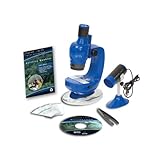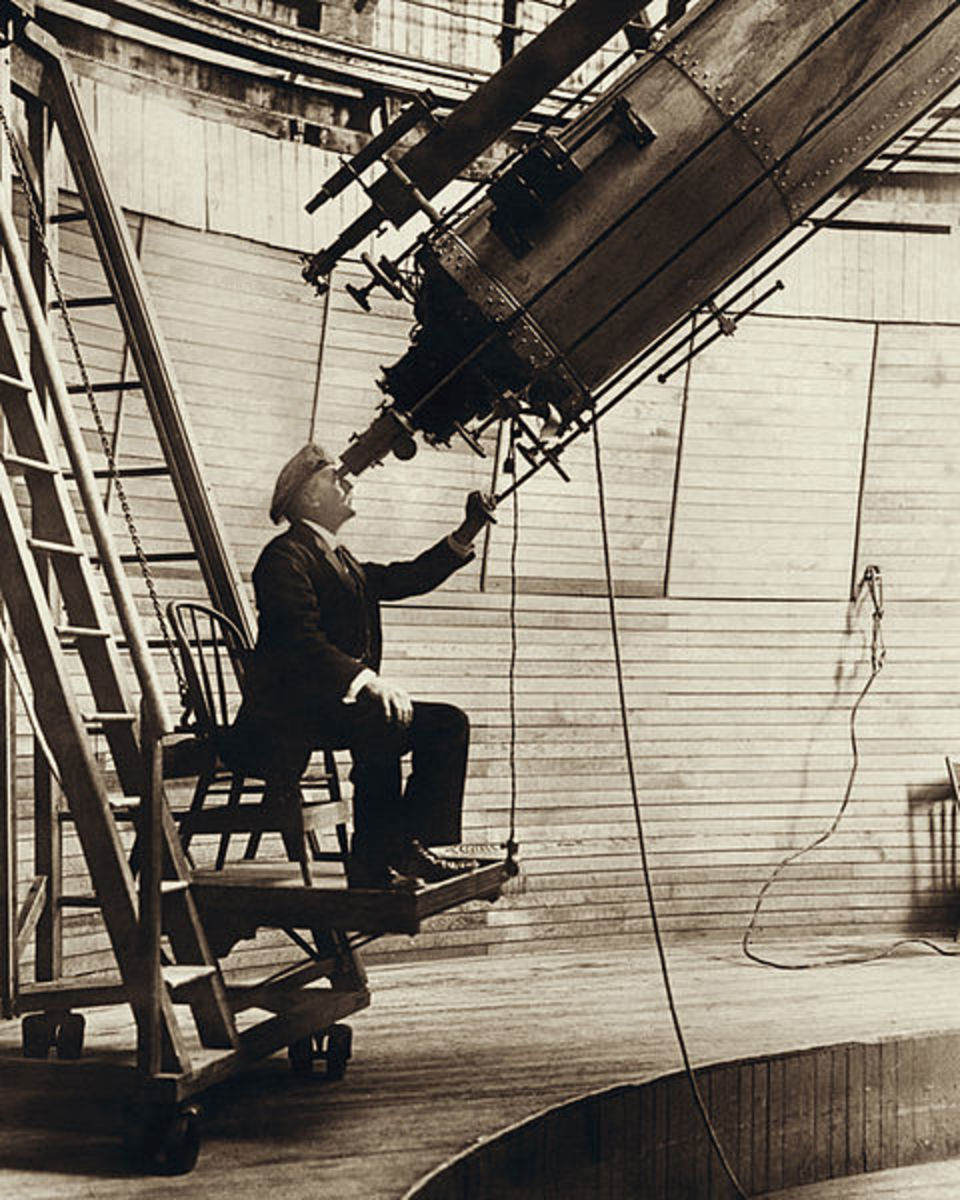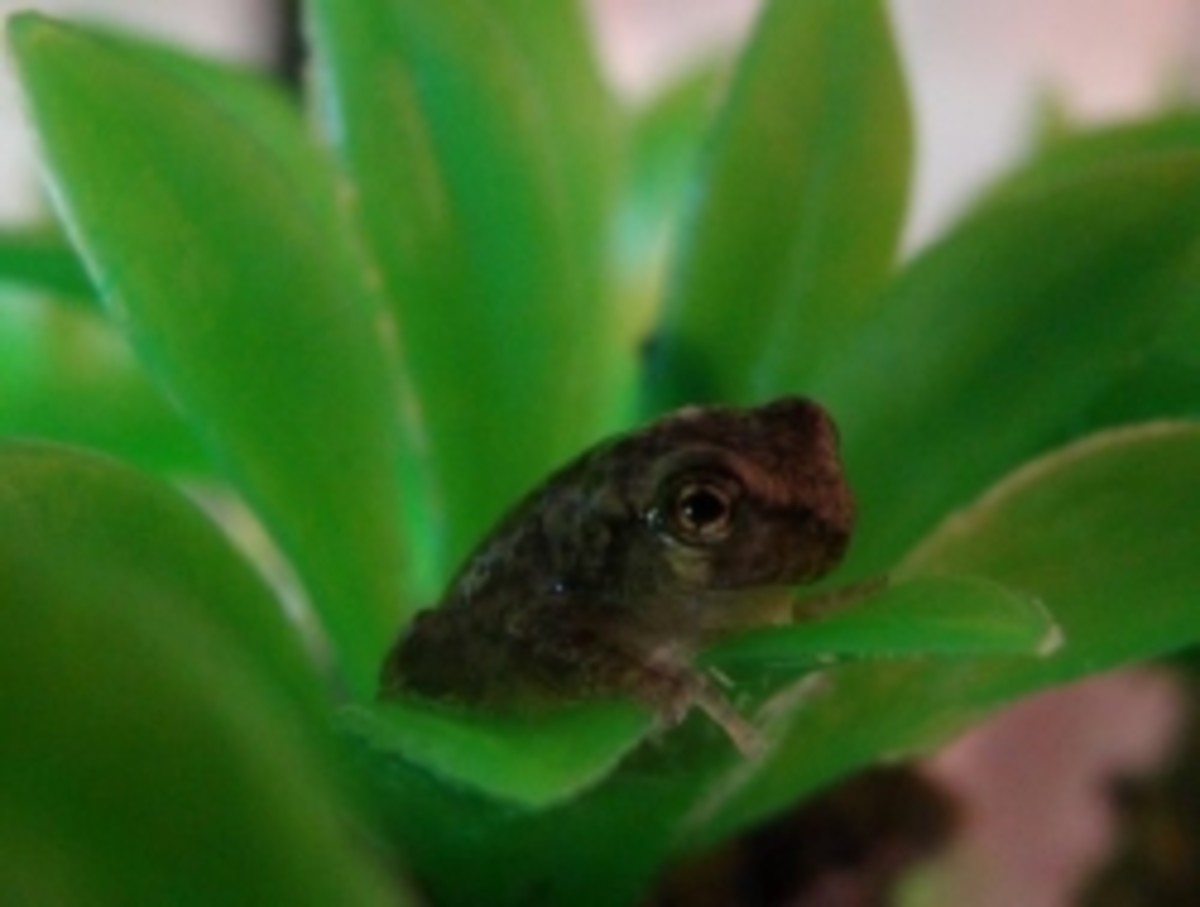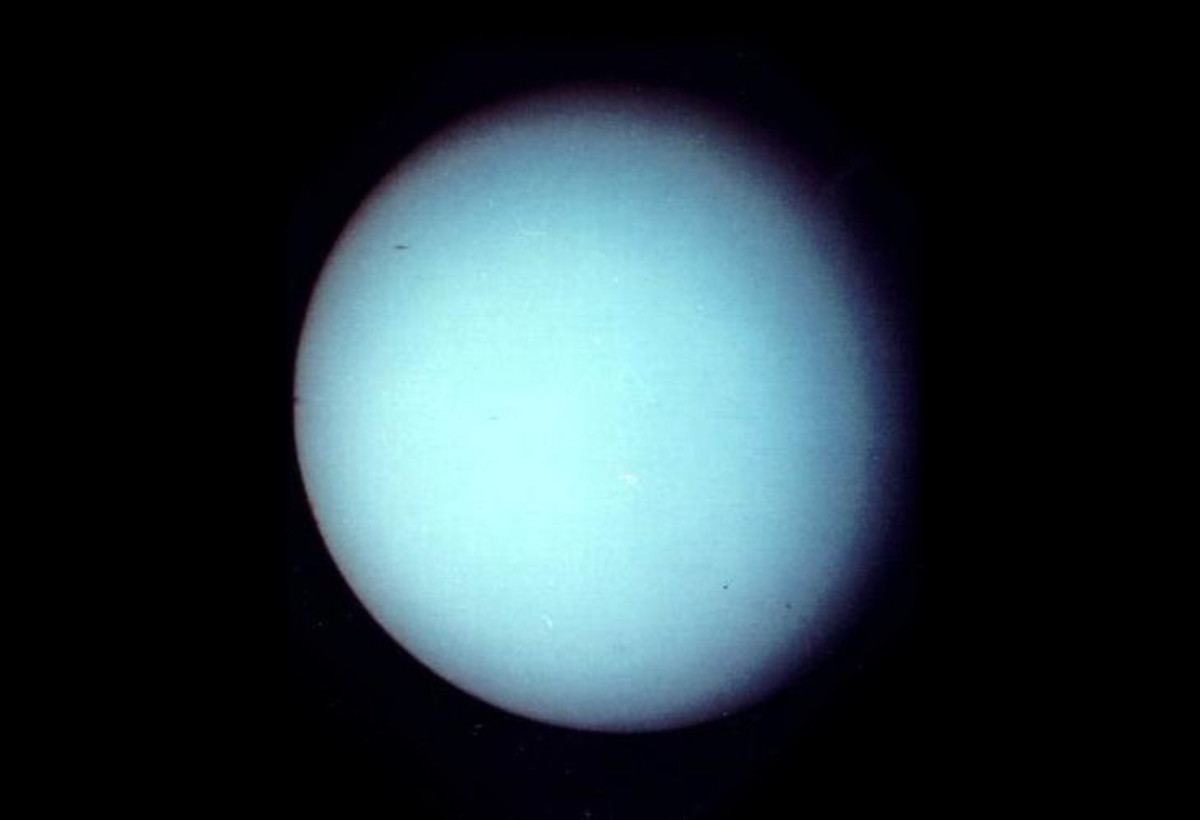Scientific Toys for the Holidays
Encourage Learrning in a Lagging Field
Science & Engineering
We desperately need more scientists in the United States. The best way to end this "short-fall" in scientists is to encourage our children, even at a very early age, to become interested in and involved in the sciences.
A coalition of business' and institutes, including groups such as the U.S. Chamber of Commerce and the National Defense Industrial Association, say there is strong bipartisan support in Washington toward boosting science training. But the group points out that the 400,000 new graduates required in Science, Technology, Engineering & Math (STEM) is falling behind projections for these by 2015.
Education Should be Fun
Often the best way to encourage learning is to make if fun. To that end, games with a scientific basis are a great way to encourage your Jr. Einstein or Young Ms. Madam Currie to make their own discoveries and possibly enter a career that both pays well and is rewardring.
This hub will include "toys" that enable the young researcher to explore chemistry, electronics, the natural world, the world of the very small and the stars.
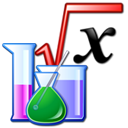
Fields
Astronomy
The study of objects in the visible universe.
Build your Own Solar System
3-D Solar System Kit: The planets and sun come in two halves complete with regular and glow in the dark paint. The regular and glow paint can be mixed together for different effects. Note that the biggest complaint with this set is that the glow-in-the-dark paint isn't as bright as expected.
The halves can be painted by your child and then snapped together. Once complete they can be put together as a mobile, hung individually from the ceiling, or just played with loosely. Includes a poster of the solar system. The completed planets are light enough that they can be hung over a bed without fear of injury should they fall.
Recommended for ages 5 to 10 years of age.
Luna
Moon in my Room: This is a pretty cool scientific toy. Primarily for looking at, no assembly is required. It is a hemispherical piece of textured plastic with the molded in mountains, valleys, and craters. It also has a remote control that allows you to control the phases of the moon (there are twelve phases) or turn it off completely. Since the lights are LEDs they will last a long time. It can also be programmed to turn on by itself at night.
Requires two AAA batteries. It also comes with a audio CD about the moon.
Because the phases can be controlled via the remote this moon is not only a remarkably detailed and accurate representation of our satellite, it makes a good night-light.
One word of caution. The remote is quite small and easy to misplace. You can't control the moon without it.
Recommended for any age.
Race to Space
Space Explorer Ultimate Space Adventure Playset: This set includes twenty pieces of authentic looking NASA replicas of the Space Shuttle, Saturn Rocket with truck and trailer, six astronauts in space-suits, a lunar rover, lunar lander, Hubble space telescope, moon rocks, flags, and more.
Also included is a very accurate poster of American and Russian rockets.
Recommended for ages 10 and up.
Spy the Sky
Uncle Milton StarScope: Uncle Milton continues it's tradition of high-quality low cost scientific toys for kids with the refracting StarScope telescope. The telescope comes with two eye-pieces and software to help you locate stars and other objects of interest in the night sky. At just over $100 this is one of the cheapest, serious telescopes you can buy. With two eyepieces your young astronomer can pick out details on the surface of the moon or spy galaxies and other objects much farther out.
The 72mm refractor telescope includes:
- 38x eyepiece lens
- 103x eyepiece lens
- Barlow lens at 2X
- Red dot finder scope
- Adjustable metal tripod
- Illuminated compass
- Red illuminated altitude and azimuth dials
- Accessory tray
- Erecting prism
- Stellarium Software (Windows)
The scope requires two (2) AAA batteries which are not included, but does come with two button batteries.
Uncle Milton combined an advanced-design telescope with computer software to help find and experience the night sky. Once the software is installed on a computer you can set the telescope with these coordinates to target planets, stars and constellations.
Recommended for ages 10 and up.
Spy the Sky II
Meade's ETX-80AT Astro Telescope: This telescope has a slightly larger diameter than the one above (80mm over 72mm) and does not require a separate program to help locate celestial objects. However, the telescope does come with astronomical software to help you find particular objects by type and season. Note: the telescope must be properly oriented to use the Autostar computer.
The Autostar controller is part of the telescope. Because this is a reflecting rather than refracting telescope it takes up slightly less space the Uncle Milton's while providing higher resolution and greater viewing distance. The AutoStar controller can be programmed to move the telescope to a selected object in the sky or told to give the user a "grand-tour."
Despite it's light weight is is quite durable and well made with slightly better than expected optics for the price. You should not expected Hubble quality images however.
Includes a tripod, autostar controller (with nine speed settings), and astronomy software.
Recommended for ages 10 and up.
Biology
The study of life in all it's forms.
Ant Life
Uncle Milton's Giant Ant Farm: You remember this one. You might have had one yourself as a kid. Well, they are still around and are still cheap considering. Yes, this is the original ant farm.
Because the ants do not have a queen or the impetus to go on food expeditions you might find their activities somewhat curtailed from what you'd expect in the wild. Still, because of the construction and large viewing area you should be able to see ants digging tunnels and creating food chambers.
Includes water feeder, ant food, tunneling sand, an Ant Watcher's Manual.
To get the harvester ants you must mail in a coupon that comes with the kit.
Recommended for ages 8 through 12.
Bug Explorer
Uncle Milton's Bug Explorer: Note: does not come with bugs, but does come with a "mushroom" shaped bug catcher. The catcher docks to the explorer unit making it quite easy to catch and observe bugs.
The unit is clear so that the intrepid bug explorer can view the insects from above, the side, or below. Magnifying viewing ports allow you to look at bugs "eye-to-eye." Base is on a "lazy-Susan" type turntable so the enclosure can be easily turned.
Best of all no batteries required!
Recommended for ages 6 and up.
Indoor Garden
Mini Hydroponic Greenhouse: Another from Uncle Milton. Though the actual unit is not quite as pretty as the picture on the box it does work and quite well at that. You can even grow plants from seed packets at your local mega-mart-hardware store.
Includes a planting bed, greenhouse, auto-feed system, twenty-four (24oz) nutrient reservoir with refill indicator, growing medium (inert),nutrient mix, gardening "tools", and Guide to Hydroponic Gardening manual.
No batteries required. Seeds not included. Can be left unattended for up to a week.
Recommended for ages 8 and up.
Water Life
Aquasaurs Habitat: The actual name of this shrimp like creature is Triops Longicaudatus. These creatures fossils have been dated to three hundred fifty (350,000,000) million years so they actually predate the dinosaurs.
Kit includes Aquasauer (triops) eggs, magnifier cap, clear lid, thermometer, food, and instruction book. Note: Triops only live about 90 days.
No batteries required.
Recommended for ages 6 and up.
Flutter-By
Live Butterfly Garden: Watch butterfly go through the stages of development from larva to winged wonder. This "kit" includes a pop-up habitat which is about two feet tall. This can be hung from a string or set on a table top. The "garden" is made of see-through mesh with a zippered opening and access.
The Butterfly Garden includes: zippered mesh habitat, mail-in coupon for 5 Lady larvae, special food, and instruction booklet.
There is an additional three dollar ($3) fee for shipping and handling when ordering the larvae.
No batteries required.
Recommended for ages 4 to 11.
Chemistry
The study of substances.
Color and Crystal Chemistry
Scientific Explorer's My 1st Science Kit: This is a very very basic kit. It has a limited number of experiments and deals mainly with the science of color via safe, non-toxic chemical compounds.
The kit allows you to create colors via a color mixing lab, grow crystals in twenty-four (24) different colors. Even capture a rainbow in a tube. Kit allows your child to perform ten (10) science experiments.
Very safe and very basic.
Recommended for children 4 to 8 years old.
Kitchen Sink
Kitchen Chemistry: Uses common household items to make: rock
candy, super bubbles, molding clay, flip-flop slime, and more.Yes, you have to supply some of the chemicals needed, but they are typically in most pantries.
Comes with it's own miniature kitchen sink to mix and store your stuff in!
No batteries required. Recommended for kids 8 to 12 years of age.
Not for children under 3 years
Mad Scientist
CHEM C1000:
Though this is billed as the perfect starter chemistry set, it has seventy-five experiments which cover:
- Acids and bases
- Electro-chemical reactions
- Surface tension of water
- Invisible color inks
- Chemical compound detection
and much much more.
Inlcudes a detailed forty page book with experiments, detailed instructions, safety information, explanations for observed results, and question and answer sections.
Kit includes:
- Experiment Manual
- Protective Safety Glasses
- Four Test Tubes
- Two Pipettes
- Sodium Bisulfate
- Sodium Carbonate
- Potassium Hexa-cyanoferrate(II)
- Calcium Hydroxide
- Ammonium Iron(III) Sulfate
- Ammonium Chloride
- Copper(II) Sulfate
- Litmus Powder
- Hexamethyl-eneteramine
- Screw-top Jar
- Two Measuring Cups
- Two Cup Lids
- Test Tube Rack
- Measuring Spoon
- Test Tube Brush
- Carbon Rod
- Plastic Basin
- Safety Lid Opener
- Four Wires
- Copper Wire
- Battery Connector
- Magnesium Strips
- Light Bulb
- Rubber Stopper
- Cork Stopper
- Pointed Glass Tube
- Angled Glass Tube
- Filter Paper
Recommended for ages 10 and up. Battery required.
The World of the Very Small
The following toys allow you to examine nature with a very portable pocket microscope or view the very small with the assistance of your personal computer.
Young Scientist
GeoSafari Talking Microscope: For the youngest scientists in the house. View twelve (12) fascinating bugs, while hearing interesting facts about them. Can also be used to test the knowledge about these twelve critters. Has a 5X (five power) focusing magnifier and light for easy viewing. Includes microscope, twelve prepared slides, storage box, and instruction booklette.
Requires three C batteries which are not included.
Suggested age range 5 to 10 years of age.
Junior Science Investigator
Planet Toys Planet Earth Digital Microscope Kit: Includes a web-camera that can be used to observe large objects that don't fit on the microscope stage. The eyepiece can also be removed and replaced with the camera so that the image can be projected on a computer screen. This way a number of people can see the image not just one.
The microscope magnifies to 100 times, 300 times, and 900 times normal. There is a slight delay between the time the camera takes an image and that image is sent to the computer. This can make focusing difficult. However, once the camera is connected you can take snapshots and videos of everything under the microscope.
Includes software and prepared slides.
Software will run on Windows 98/ME/200/XP or above, with a Pentium 200MHz processor or faster, at least 64MB of RAM, a video card with 4MB of RAM minimum, and a 24-bit display. Installation software requires a CD-ROM drive along with one USB port for the web-cam.
The included activity booklet has six (6) projects to help the young scientist get started. Included are observing leaves, pond water, and crystals. The kit also comes with eight (8) prepared slides including an ostrich feather, aloe gel, celery, and tree bark. You can also create your own slides. Also included are tweezers and plastic bags for collecting specimens.
Recommended for ages 5 and up.
Requires 3 AA batteries which are not included.
Take it with You
Discovery Channel Kids Mega View Microscope: View everyday objects in amazing detail by placing the microscope on the object you want to view. Truly portable. Works with a table stand for "traditional" microscope viewing or can put pocketed to examine items in the field. You can also connect this microscope to your TV for an extra large viewing.
Comes with built in white LED light and fine focus adjustment. Includes video cable, four blank slides and four slide covers.
Requires 6 "AAA" batteries which are not included.
Recommended for ages 8 and up.
Student Microscope
Binocular Stereo Microscope 20x-40x-80x w Dual LED Lights: This is pretty close to professional quality without the high price. Includes Binocular stereo microscope with 2x and 4x objective, 2 wide field 10/20 eyepieces 2 wide field 20X/10 eyepieces, power adapter, frosted glass stage plate, black/white plastic stage plate, rubber eyeguards, Allen key for locking stage plate, wrench for tension adjustment, dust cover, and 3 AA batteries
Recommended for ages 10 and up.
Disclaimer
The author has not been compensated monetarily, via discounts, or freebies for these product reviews.







